Historically, members of the coregonine complex (Coregonus spp.) were the most abundant and ecologically important fish species in the Great Lakes (especially the cisco C. artedi), but anthropogenic influences caused nearly all populations to collapse by the 1970s....
Restore
Production, fish health surveillance, and research at Northeast Region U.S. Fish & Wildlife Service (USFWS) facilities to support restoration of sustainable coregonid populations in Lake Ontario
Captive coregonid brood stock management facilities at Jordan River National Fish Hatchery
Region 3 wild coregonine broodstock collection activities for FY 2019 in support of restoration activities on Lake Huron and Lake Ontario
The U.S. Fish and Wildlife Services Midwest Region Fisheries Program carried out two projects in support of a multi-agency effort to restore coregonid populations in Lake Huron and Lake Ontario. The first project began in 2017 when USFWS started collecting cisco...
Susceptibility and clearance of Aeromonas salmonicida (furunculosis) in Coregonus artedi (lake herring)
Aquaflor® (florfenicol) and Terramycin®200 for Fish (oxytetracycline) are approved medications in the United States for delivery with feed to control mortality in salmonids due to furunculosis associated with Aeromonas salmonicida. The purpose of this study was to...
Region 3 wild coregonine brood stock collection activities for FY 2020 in support of restoration activities on Lake Huron and Lake Ontario (2020)
The U.S. Fish and Wildlife Services Midwest Region Fisheries Program carried out two projects in support of a multi-agency effort to restore coregonid populations in Lakes Huron and Ontario. The first project began in 2015 when USFWS began documenting the spawning...
Developing a Great Lakes-wide database of coregonine stocking
A database of information associated with the release of hatchery-raised Coregonine fishes of Great Lakes origin was constructed and populated with all available records (>4,700) of stocking events. The information includes species, quantities, life stages, source...
Are there differences in larval and juvenile gene expression between hatchery and wild coregonids?
Management agencies are investigating best practices for coregonid (C. artedi and C. hoyi) culture, stocking, and broodstock development. However, before large scale production can begin, decisions about the sources of broodstock, culture practices, and stocking rates...
Quantifying a potential mechanism between ice cover and cisco recruitment success: what role does light play in cisco embryonic development and larval survival?
Over the past several decades, Coregonus recruitment has dwindled to unprecedented levels for unknown reasons. Coregonus species are fall spawners whose embryos incubate under ice throughout the winter and hatch in spring. Recent changes in ice cover coupled with poor...
Kiyi reproductive phenology in Lake Superior
Kiyi historically occurred in Lakes Huron, Michigan, Ontario, and Superior. Today they occur in Lake Superior. Reestablishing Kiyi into lakes where it went extinct is a topic of discussion among Laurentian Great Lakes fishery managers. An impediment to re-introducing...
